Abstract
Alkalotolerance of Yersinia enterocolitica measured in solutions of potassium hydroxide with 0.5% sodium chloride was influenced by the cell suspension medium, temperature, and growth phase. The rate of cell destruction (delta log N per minute) was five times greater at 30 degrees C than at 20 degrees C. Differences in the degree of cell destruction at various concentrations of potassium hydroxide were related to pH and not to osmolarity. The addition of peptones to potassium hydroxide provided a protective effect that was greater for cells suspended in Trypticase soy broth than for those suspended in phosphate-buffered sorbitol-bile salts broth. Log-phase cells were less alkalotolerant than cells in the stationary phase of growth. A modified procedure for alkali treatment, using peptone-supplemented 0.5% potassium hydroxide-0.5% sodium chloride and the addition of a pH 6.6 buffer after treatment to prevent further cell destruction, was used to observe a marked difference in alkalotolerance between Y. enterocolitica and other gram-negative bacteria. Despite this difference, alkali treatment was not highly successful for recovery of Y. enterocolitica from enrichments of seeded foods in comparison with selective enrichment in bile-oxalate-sorbose broth.
Full text
PDF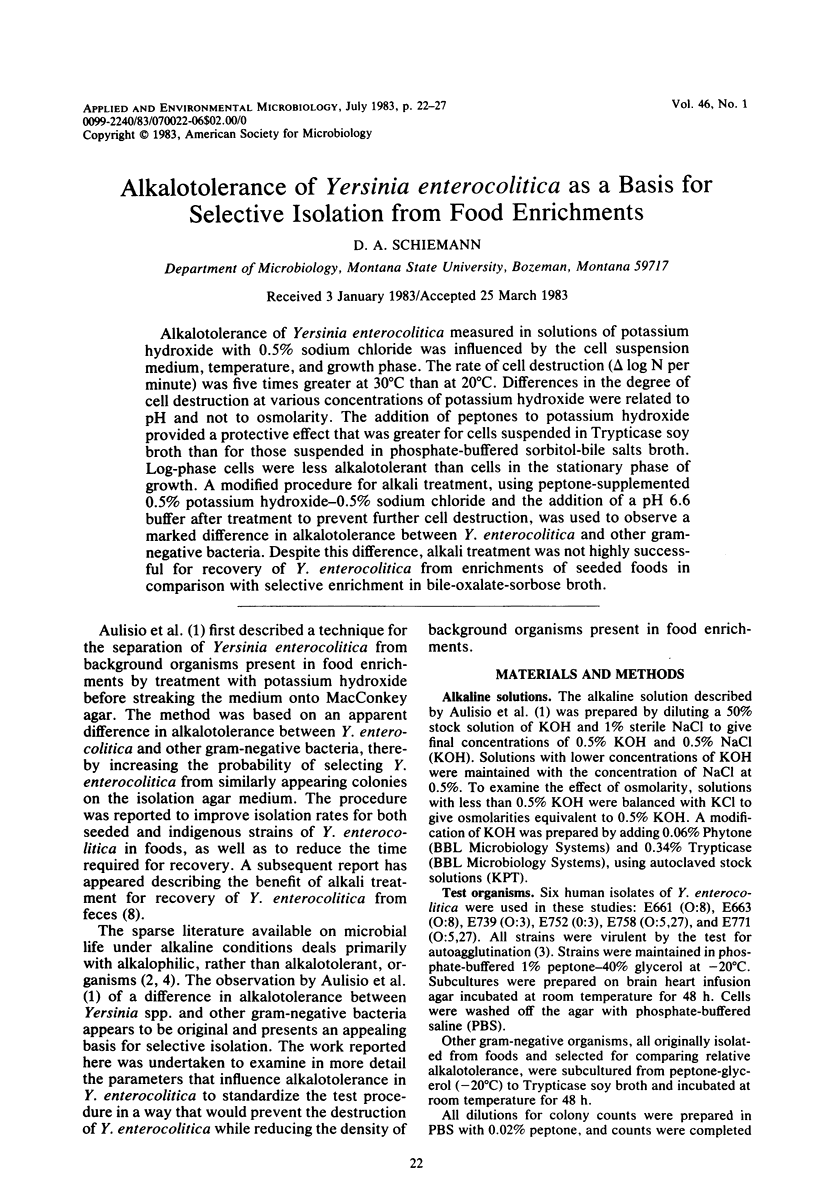
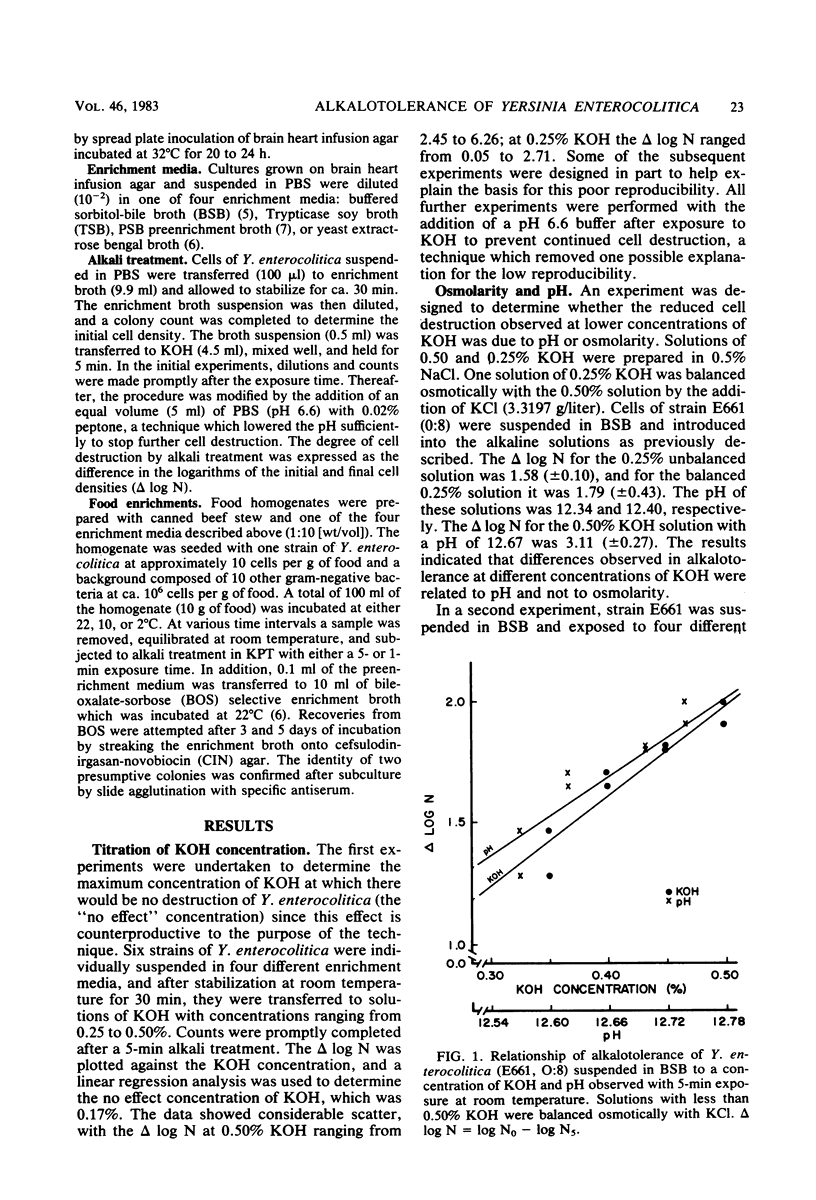
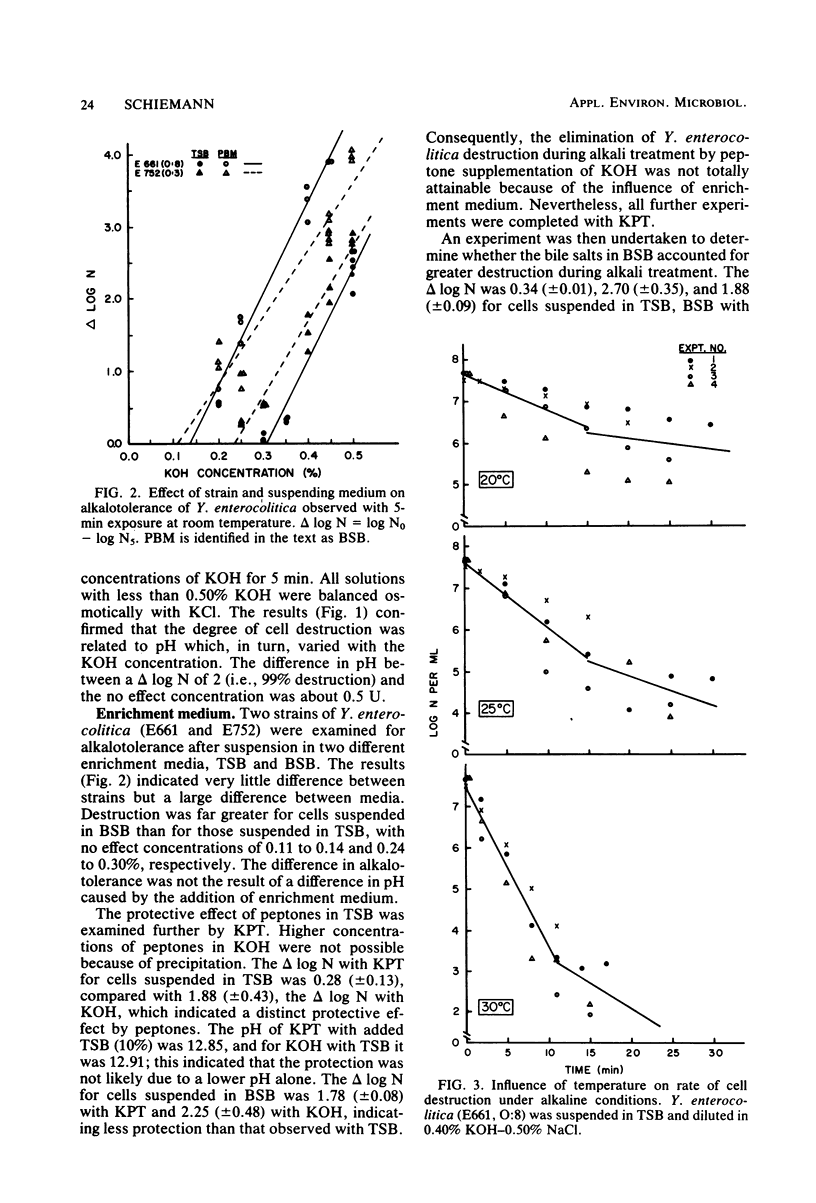
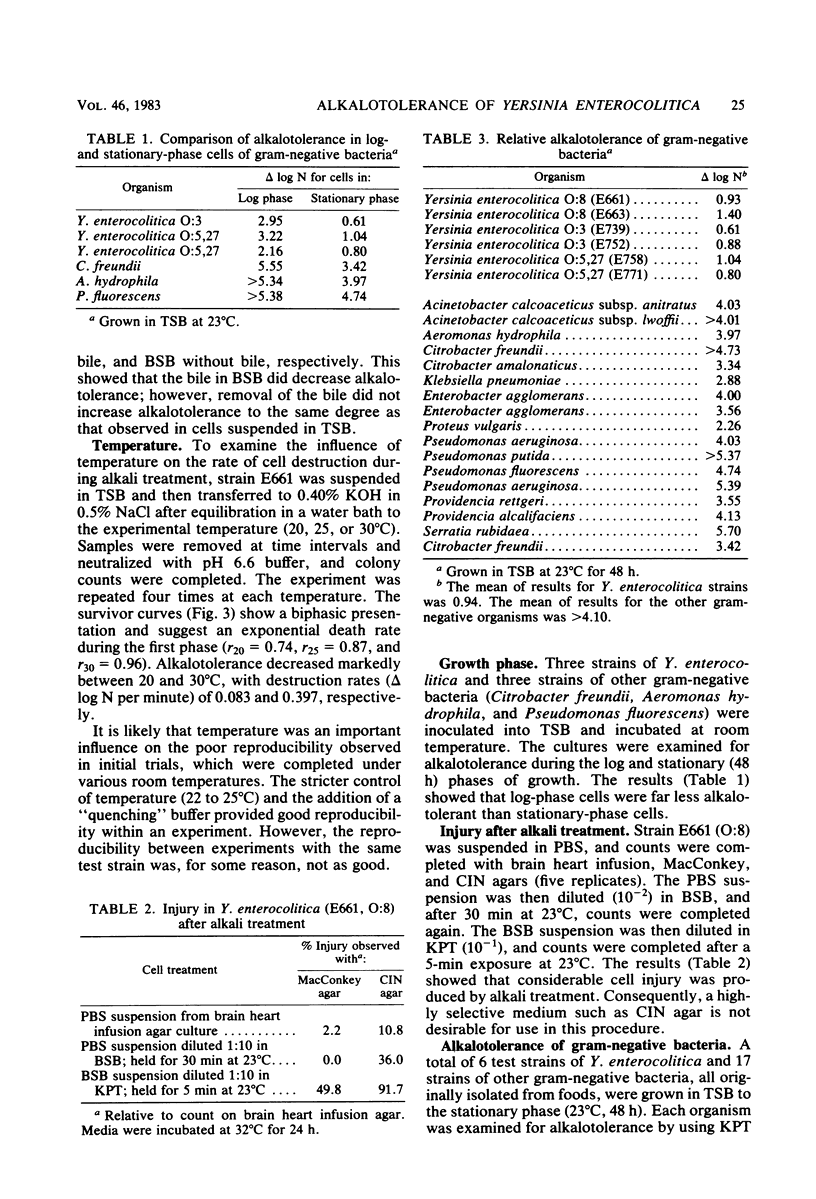
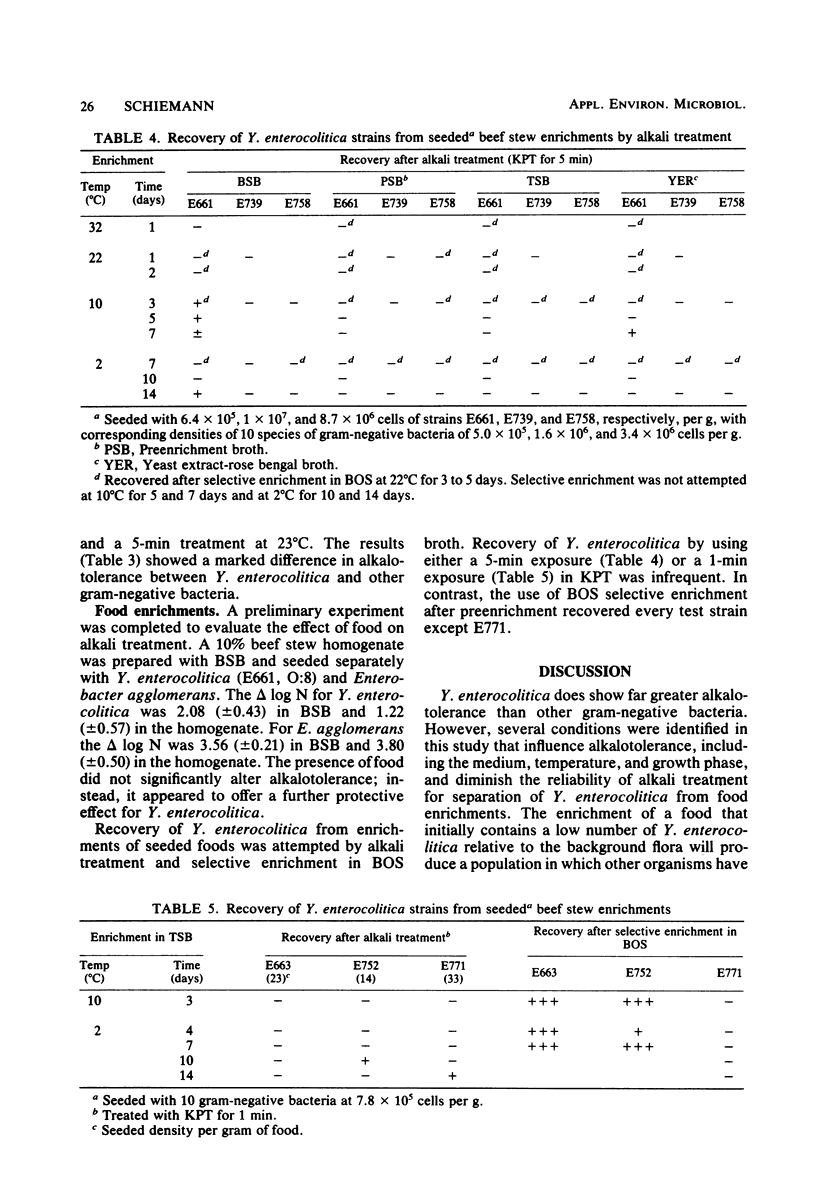
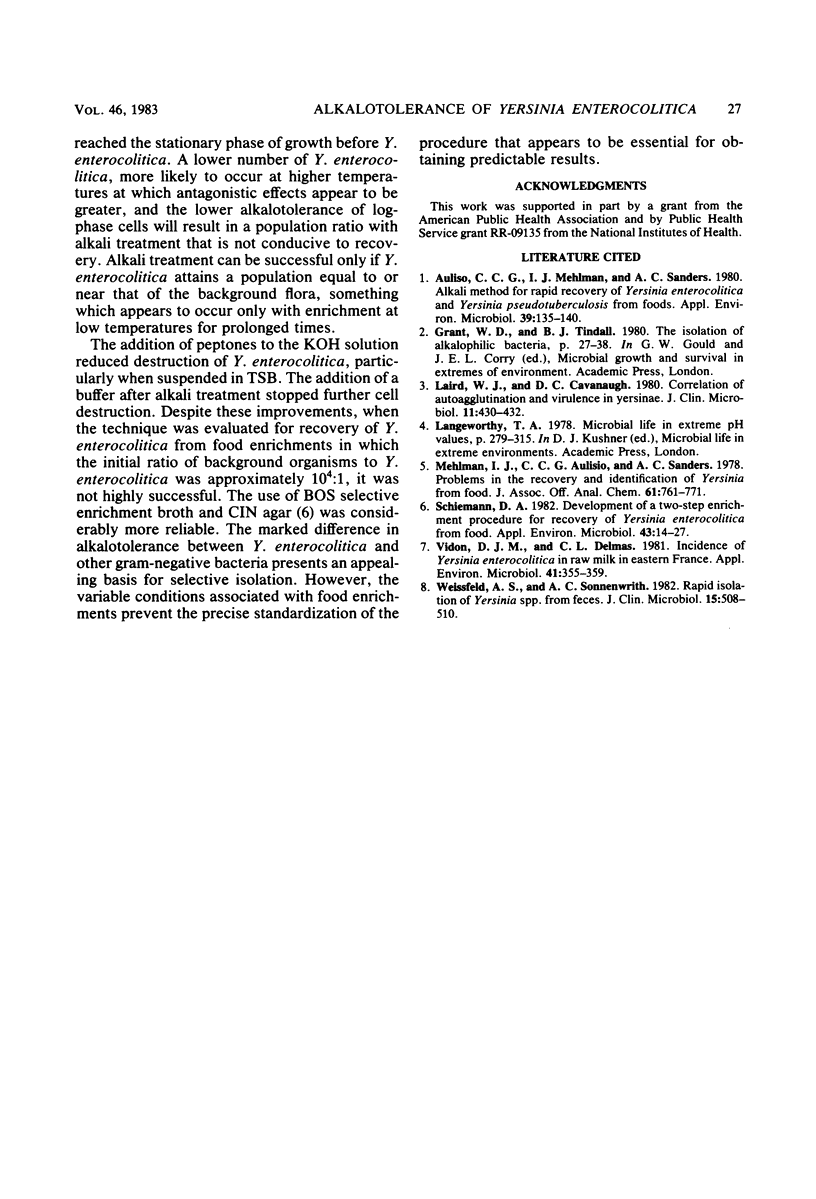
Selected References
These references are in PubMed. This may not be the complete list of references from this article.
- Aulisio C. C., Mehlman I. J., Sanders A. C. Alkali method for rapid recovery of Yersinia enterocolitica and Yersinia pseudotuberculosis from foods. Appl Environ Microbiol. 1980 Jan;39(1):135–140. doi: 10.1128/aem.39.1.135-140.1980. [DOI] [PMC free article] [PubMed] [Google Scholar]
- Laird W. J., Cavanaugh D. C. Correlation of autoagglutination and virulence of yersiniae. J Clin Microbiol. 1980 Apr;11(4):430–432. doi: 10.1128/jcm.11.4.430-432.1980. [DOI] [PMC free article] [PubMed] [Google Scholar]
- Mehlman I. J., Aulisio C. C., Sanders A. C. Microbiological methods. Problems in the recovery and identification of Yersinia from food. J Assoc Off Anal Chem. 1978 Jul;61(4):761–771. [PubMed] [Google Scholar]
- Schiemann D. A. Development of a two-step enrichment procedure for recovery of Yersinia enterocolitica from food. Appl Environ Microbiol. 1982 Jan;43(1):14–27. doi: 10.1128/aem.43.1.14-27.1982. [DOI] [PMC free article] [PubMed] [Google Scholar]
- Vidon D. J., Delmas C. L. Incidence of Yersinia enterocolitica in raw milk in eastern France. Appl Environ Microbiol. 1981 Feb;41(2):355–359. doi: 10.1128/aem.41.2.355-359.1981. [DOI] [PMC free article] [PubMed] [Google Scholar]
- Weissfeld A. S., Sonnenwirth A. C. Rapid isolation of Yersinia spp. from feces. J Clin Microbiol. 1982 Mar;15(3):508–510. doi: 10.1128/jcm.15.3.508-510.1982. [DOI] [PMC free article] [PubMed] [Google Scholar]


